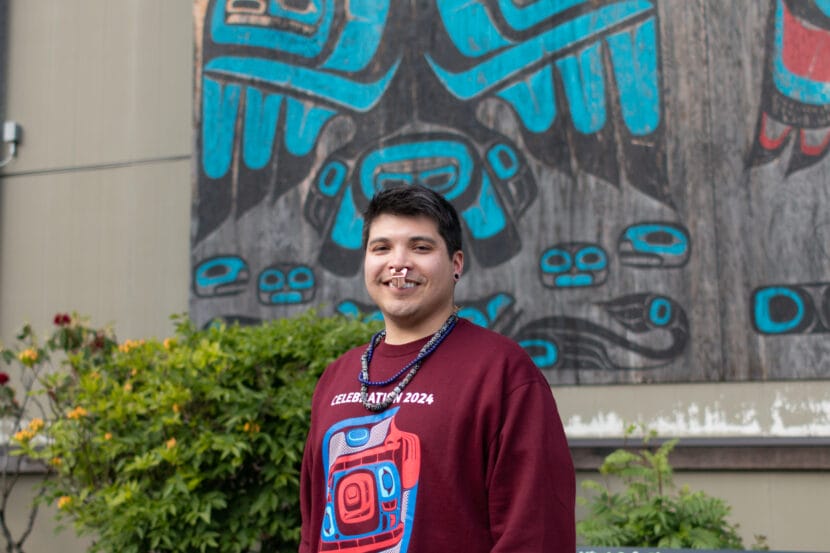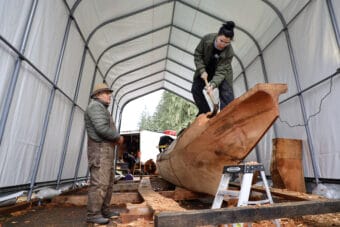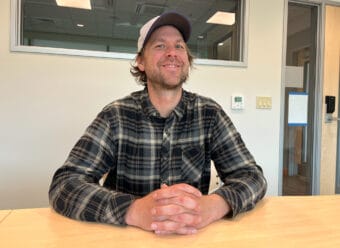
This is Tongass Voices, a series from KTOO sharing weekly perspectives from the homelands of the Áak’w Kwáan and beyond.
Last week was Nick Alan Foote’s first time at Celebration in almost two decades. In the time he’s been away, he’s made a home in Seattle, left a job in corporate graphic design, and become a full-time Lingít artist alongside his sister, Kelsey Mata Foote. His formline piece, “Sacred Embrace,” was chosen to represent this year’s Celebration. The theme was “Together We Live in Balance.”
He performed at Celebration with the Sheet’ka Ḵwáan dancers, who honored the 50 year anniversary of the Sitka Native Education Program, during their performance at Centennial Hall.
Listen:
This transcript has been lightly edited for clarity.
My name is Nick Foote, Nick Alan Foote. My Lingít name is G̱at X̱wéech. I’m kind of from all over Southeast Alaska. I’ve lived in Juneau, Ketchikan, Sitka and Klawock in the summer. And I currently live in Seattle, but I’m up here for Celebration this year.
My mom is in Arizona, and my sister’s in Texas, and my grandma is in Ketchikan. So everybody’s spread out, and it’s hard to get everybody together. And we are joining a dance group that we used to dance with in Sitka — the Sheet’ka Ḵwáan dancers.
Yeah, so the piece I created for Sealaska Heritage Institute’s celebration this year is “Sacred Embrace.” On the outside, there’s a spirit embracing a human, and within that is a raven and an eagle. This represents tradition and culture and our connection to it. And then within it, in the very center, at the heart of it, is a salmon, which represents the connection that Alaska Native people have to the environment and the land.
My parents always kept a lot of Alaska Native artwork around the house. My Aunt Kathy is an artist, and she would give us a lot of artwork. It was always on our walls. So I would just try to mimic and trace the shapes. And just, that was definitely, you know, the starter, the kicking off point into formline.
But I also was just being exposed to it through the Johnson O’Malley program. I was also part of the Sitka Native Education Program, so I had a lot of exposure to the artwork because we would make our own regalia. So we would sew on, you know, clan crests to our robes. And by the time I got to college, I was learning Adobe Illustrator and Photoshop, and so I kind of took what I knew about formline design and started bringing it over into the digital aspect.
I think I really started to take formline design seriously as like a career when I moved to Seattle because I kind of got homesick a little bit for, you know, Alaska. And so I started drawing a lot, creating my own designs to kind of cure my homesickness.
It’s something that I feel like I’ve always been pulled to, but it just had to slowly evolve into making that leap from graphic design corporate world to making my own art.
I would say, just keep drawing. That’s really…if you love it, do it every day, draw what you love. There’s a place for you in the creative world, and your art.


